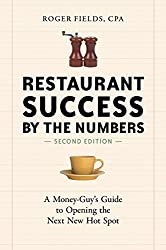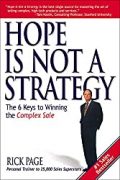
Rating: 8.7/10.
Restaurant Success by the Numbers: A Money-Guy’s Guide to Opening the Next New Hot Spot by Roger Fields
Book about the restaurant industry written by an accountant who ran several restaurants in New York. There’s a common myth that 80-90% of restaurants fail within the first year. In reality, restaurants have one of the most reliable business models, some of them fail of course, but is much less common than in other industries like tech startups. There is competition, but it is purely local and limited to the radius of a few miles; there is always high demand for eating out, even in rough economic times.
The first step is planning your restaurant concept: what type of food were you serve, what level of service would provide, and what unique selling points that will differentiate you from the competition? For example, the level of service can be fast food (optimized for rapid turnover), food trucks (not recommended because of higher overhead costs compared to typical restaurants), take-out only restaurants, and full dine-in service. The concept needs to match the demographic characteristics of your desired location, which you can research by official statistics, conducting surveys, and looking at customers of existing restaurants in the area. Location is critical: Pay attention to patterns of traffic in the area (variable depending on time and day), zoning regulations, access to pedestrians, and parking, etc. Next, make a financial plan: estimate your incomes and expenses (often by comparing to similar restaurants in your area), and determine whether the idea is feasible (i.e., can make a reasonable profit). Also calculate the amount of starting capital you will need to open. The author gives a table of all the major costs you should include in this calculation.
When designing menu items, the cost of ingredients should be about 30% of the menu price, but this is not fixed and also depends on what other restaurants are charging and how much customers are expecting to pay. When designing the restaurant interior, optimize for the flow of traffic so that waiters and customers do not run into each other, design lighting to make people and the food look good, while adhering to local regulations about bathrooms, fire safety, etc. Bars and alcohol is a very profitable business since the price of alcohol is often less than 10% of the sale price, but you will need to deal with a lot of regulations and licensing related to sale of alcohol; you will also need to keep strict accounting of inventory otherwise you will lose drinks due to bartenders being generous or theft.
The back end of the restaurant (kitchen and storage space) needs to be space efficient in order to allow for as many customer seats as possible, while also being efficient for cooks who should not need to take more than one step to reach for the tools they need. Service is important: the food attracts people in, but the service makes them come back – for consistently good service, you should have clear written guidelines and policies for servers, and monitor your staff closely to make sure they are serving the right portions, not stealing food and beverages, but pay them well enough so they don’t leave.
The last section of the book covers financial, accounting and legal details while opening the restaurant: documents needed to get a loan approved from the bank negotiating a commercial lease; tradeoffs of different business structures; marketing for your new restaurant before opening day, and more. Overall, this book gives many details about specific aspects of the restaurant business, such as many types of kitchen equipment, choosing tableware and furniture, etc, and the author often lists brands of service providers that he recommends. A very insightful read for anybody thinking about opening a restaurant or just curious about how the restaurant industry works.



